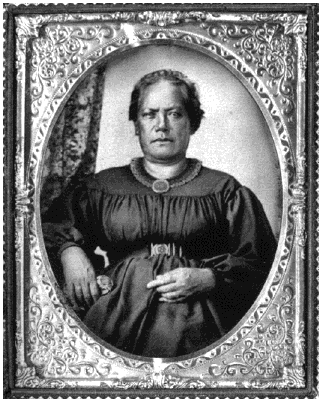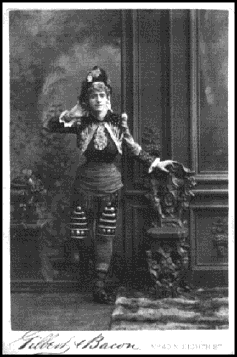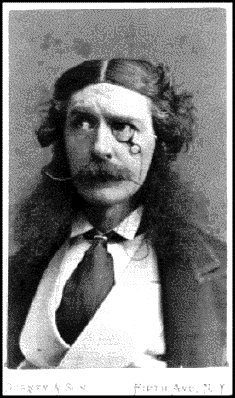to Early Photographs
O. Henry Mace
(Krause)

Collector's Guide to Early Photographs lists nine photography styles of the nineteenth century, including the more familiar tintypes, wet plates, daguerreotypes, and stereographs --- plus more exotic ones like (for example) cartes de visite which were introduced in 1854, and went out of style by the turn of the century. In this most helpful guide, the author explains that the camera contained a rotating back, and eight individual images were put on a single negative, which, "after printing on albumen paper, the images were cut apart and glued to card-sized mounts..." These were "left by visiting friends, inspiring the name carte de visite."
 The Collector's Guide is chockablock full of fascinating and different styles of photographs --- with complete description of the process, the date of invention, the time of its greatest popularity, and, in some cases, the value of these photographs when sold to collectors. For example, the photograph of the High Chiefess Konia [See Fig. 1 above] recently sold for $9,775 --- because of its size, and because photographs of Hawaiian royalty are not a dime a dozen. Even if you aren't into the collecting business, you'll love the ancient photographs of sailboats, pyramids, Indians, men, women, soldiers, drummers, vistas --- and most astoundingly, shots of dead babies, which the author explains, were not considered grim at all, not in those days.
The Collector's Guide is chockablock full of fascinating and different styles of photographs --- with complete description of the process, the date of invention, the time of its greatest popularity, and, in some cases, the value of these photographs when sold to collectors. For example, the photograph of the High Chiefess Konia [See Fig. 1 above] recently sold for $9,775 --- because of its size, and because photographs of Hawaiian royalty are not a dime a dozen. Even if you aren't into the collecting business, you'll love the ancient photographs of sailboats, pyramids, Indians, men, women, soldiers, drummers, vistas --- and most astoundingly, shots of dead babies, which the author explains, were not considered grim at all, not in those days.
E W Scripps and
The Business of
Newspapers
Gerald J. Baldasty
(Illinois)

They tell us that Dr. Baldasty is some kind of a professor of Communications, so maybe the lifeless tone and endless repetition is the way to get information across to those half-stoned Monday morning students. But better, how about the University of Illinois Press investing in an editor who could light a fire under these tired old professors with their tired old sentences, teach them how to write the simple, two-fisted declarative sentence. Best, the editors at The National Enquirer could show Baldasty a thing or two about style.
Those of us who want the smell and taste of the excitement of Hearst and Scripps and Pulitzer battling it out with their noisy newspapers on the streets ( and in the alleys) might as well forget this one. For real ink-stained, press-room, gutter action, you might try W. A. Swanberg's Citizen Hearst instead. Now there's someone who knows how to tell a two-fisted newspaper story!
90 Minutes
Paul Strathern
(Ivan R. Dee)
Well, he did and they printed it in large type for those of us who don't especially like reading big words, unless they are 18 point. Then they printed it on the worst paper they could come up with, probably recycled stock from the Federal Register. Finally, they plastered a slick white cover on it, and called it You Name It in 90 Minutes. (They've done Descartes, Kierkegaard, Hegel, Aristotle, Plato, and ten or twelve more of The Greats; they also have about a dozen more in the oven.)
Great marketing strategy. You and I don't want to bother our brains too much slogging through the real thing, like Stadoer paa Livets or Die Phänomenologie des Geistes or Principia philosophia when we can pick up 90 Minutes and then go down and tell our friends at the It'll Do Tavern, "You know, that reminds me of something that Hume said." Pause. Disbelief. We had been good on conversations about O. J., the Spice Girls, and The Lakers and the Knicks, but Hume!
"He said, and I quote, Errors in religion are dangerous; those in philosophy only ridiculous." And everyone sits back, and blows out a little smoke, and nibbles on their beers a while, and thinks, "Why this guy certainly knows his philosophy, don't he?"
The astonishing works of Confucius, and his equally astonishing effect on the entire set of an entire culture for 2,500 years is rendered to a few dozen pages, with such insights as
Confucius was an earnest young man who believed in sharing his vast learning with the world: not a great technique for job interviews,
Or, this on the I Ching (which is thought by millions to be a fairly profound system of dealing with the world):
Even philosophers must have their hobbies, and throwing little sticks in the air to find out who's going to win the 21:30 race at Shanghai seems harmless enough to me.
Then this on Buddhism and its 2500 year history of pacifism, its astounding insight into the human heart (and suffering), and its gentle view of humanity:
The parallels with Christian thought are again all too evident, with the difference that in such times of difficulty Buddhists prefer to set fire to themselves rather than each other.
9,000 words in 90 minutes means a reading speed of 100 words a minute. Seems rather excessive for the hoped-for audience, doesn't it?